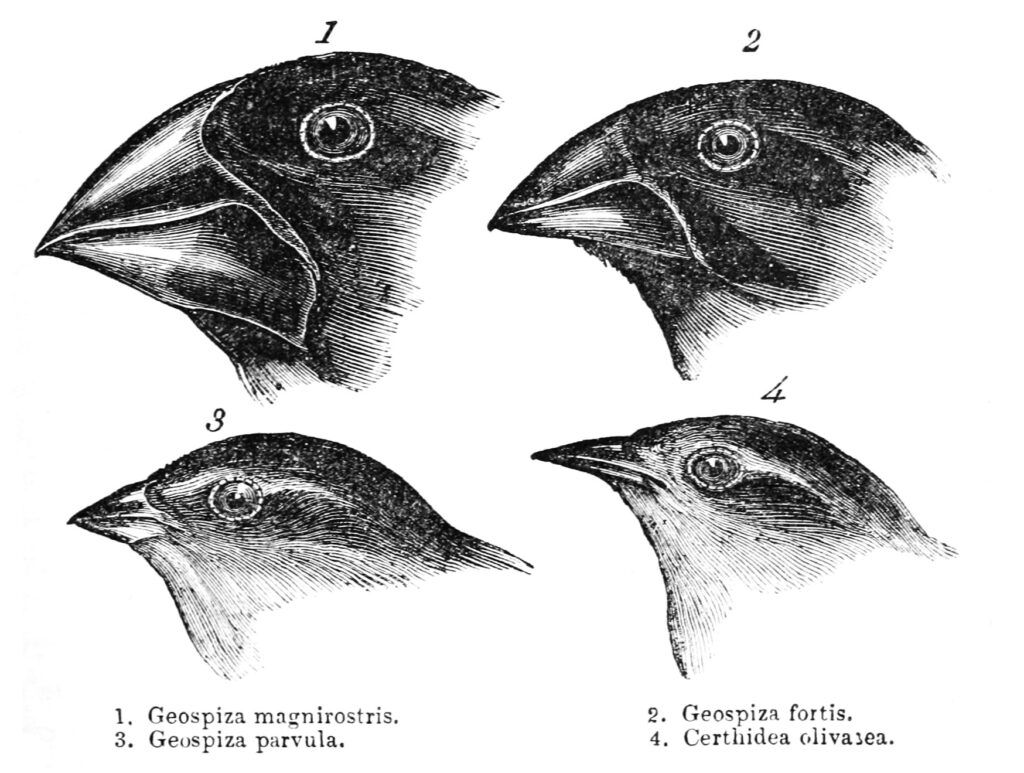Burress, E. D., & Hart, P. B. (2024). Pelagic zone is an evolutionary catalyst, but an ecological dead end, for North American minnows. Evolution, qpae062.

What happens when animals colonize a new habitat? Evolution often proceeds quickly when faced with new opportunities. For example, animals that colonize islands might lose predators or gain access to new food sources. Island colonizations often produce “adaptive radiations,” in which many new species evolve quickly and diversify into new forms to take advantage of new opportunities.
Habitat complexity also affects the rate of evolution. Habitats with a lot of 3D structure, such as coral reefs or forests, have more microhabitats (also called niches) that different animals can occupy. On the other hand, simpler environments such as an empty grassland provide fewer niches. Thus, complex habitats often lead to faster rates of evolution than simpler habitats.
But what happens when animals move into a new environment that is simpler than their old one?
Small fry
In aquatic ecosystems, two major types of habitats are benthic (bottom) habitats and pelagic (open-water) habitats. Pelagic habitats are much larger than benthic habitats (there is more volume of open water compared to the bottom of a lake or ocean), but benthic habitats are more complex because there is more physical structure. This difference is important in both marine environments (oceans) and freshwater environments like rivers and lakes.

North American minnows are small fish commonly in rivers throughout the continent, and can be either benthic or pelagic. Dozens of species of minnows used to live in benthic habitats but have since transitioned to pelagic habitats. The effects of colonization and habitat complexity present two opposing forces that might affect these species. On the one hand, colonizing a new environment is expected to increase evolutionary opportunities and lead to diversification. On the other hand, the pelagic environment is less complex than the benthos, which might limit diversification. In a recent study, biologists investigated how the colonization of the pelagic environment has affected the evolution of these fish.
Taking (fish) measurements
The scientists considered two kinds of evolution. First, they took a variety of body measurements—much like getting fitted for a suit! By comparing between species, this allowed them to quantify the rate of evolution of physical traits such as body size. Biologists call this kind of evolution “phenotypic evolution,” meaning changes in the physical traits of organisms. Another kind of evolution is speciation, when one lineage splits into two new, reproductively isolated lineages. However, different species can still be phenotypically (physically) similar. In this study, the researchers looked at both phenotypic evolution and speciation.
Pelagic minnows were more phenotypically similar to one another and evolved more slowly compared to benthic minnows, consistent with the idea that habitat complexity limits their ecological opportunities. On the other hand, pelagic minnows split into new species more often than benthic minnows did. Thus, the two kinds of evolution (phenotypic and speciation) don’t seem to be related to one another.
How do new habitats affect evolution?
What does this finding mean for our understanding of evolution? Well, when animals move into a new environment, scientists often assume that this will lead to new opportunities for diversification, along with higher rates of speciation. The minnow study shows that diversity and speciation are not necessarily related. Although there might be more species of minnows in the pelagic habitat, there is not necessarily more diversity. This is important for how we think about conserving biodiversity. Complex habits (such as coral reefs) might have a lot of biodiversity that we want to protect, even though there might be fewer species.
Cover image source: Wikimedia Commons

I am a PhD student at MIT and the Woods Hole Oceanographic Institution, where I study the evolution and physiology of marine invertebrates. I usually work with zooplankton and sea anemones, and I am especially interested in circadian rhythms of these animals. Outside work, I love to play trumpet, listen to music, and watch hockey.

